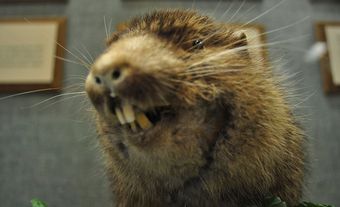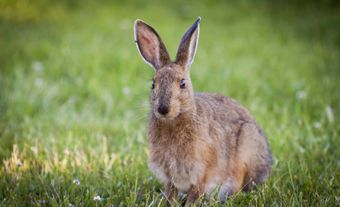Kangaroo Rat, solitary, strictly nocturnal rodent of the N American family Heteromyidae. The family comprises 75 species (see Pocket Mouse). Of the 14 species of kangaroo rat, only one occurs in Canada. Ord's kangaroo rat (Dipodomys ordii) of the Great Sand Hills of SW Saskatchewan and Alberta is one of Canada's rare desert-dwelling mammals.
Description
The front legs of the kangaroo rat are weak; the hind legs long and powerful. The tail, longer than the body, is used for support and balance. These features enable the rat to move by jumping. The kangaroo rat grows up to 28 cm long. Its body is tawny with white underparts. White patches occur on the upper lip, above the eyes and behind the ears; white stripes across the hips. Cheek pouches are used to carry grain to the burrow, where kangaroo rats hibernate.
Diet
In addition to grain, insects are also eaten. Kangaroo rats drink little water, having adapted to minimal water loss. Although very agile, they are preyed on by carnivorous mammals, birds and snakes.
Reproduction and Development
In Canadian populations mating occurs in spring; gestation lasts 29-30 days. Females can produce 2 or more litters annually, each averaging 3-4 young.

 Share on Facebook
Share on Facebook Share on X
Share on X Share by Email
Share by Email Share on Google Classroom
Share on Google Classroom





